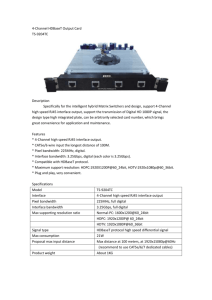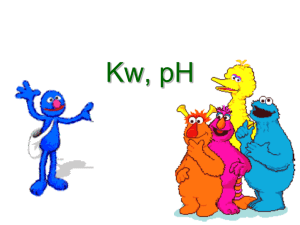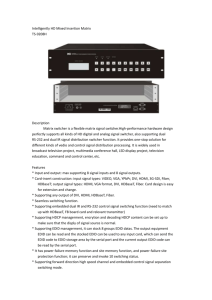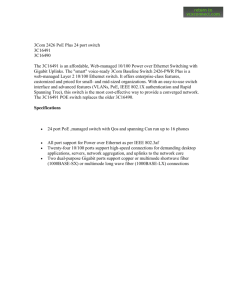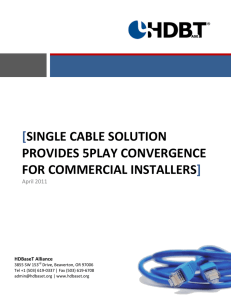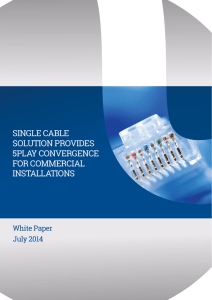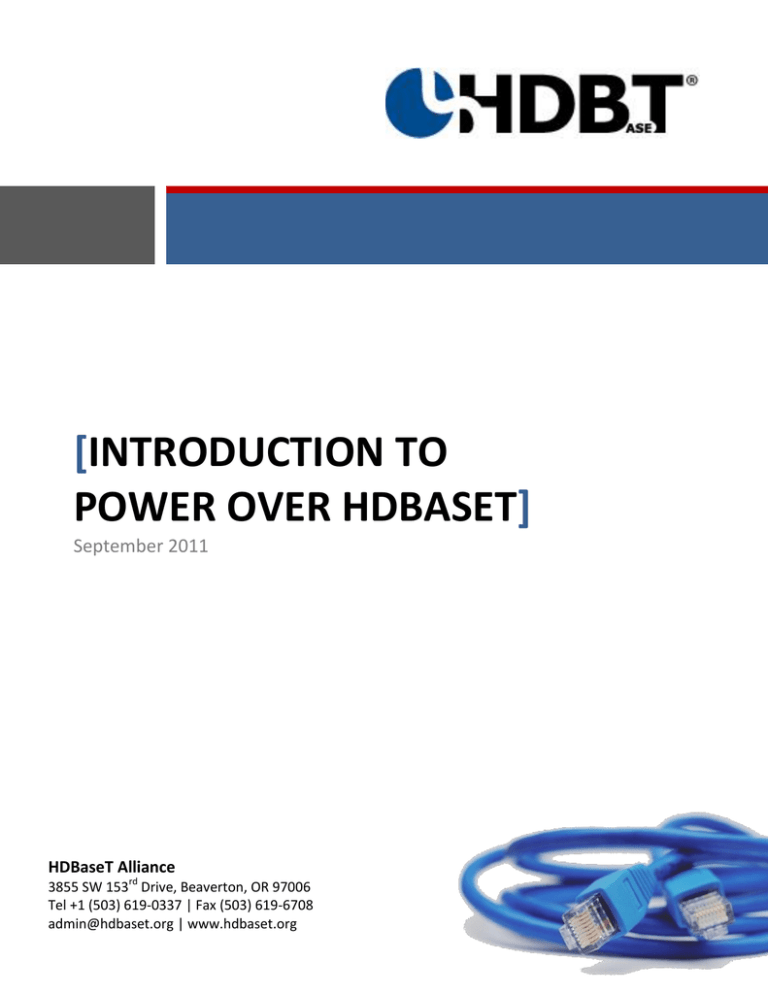
[INTRODUCTION TO
POWER OVER HDBASET]
September 2011
HDBaseT Alliance
3855 SW 153rd Drive, Beaverton, OR 97006
Tel +1 (503) 619-0337 | Fax (503) 619-6708
admin@hdbaset.org | www.hdbaset.org
Introduction to Power over HDBaseT
There is a clear trend and market need for high-power transmission over cable.
Power over
HDBaseT (POH) enables the transfer of DC power in conjunction with data signals over a single
Ethernet cable to a distance of up to 100 meters (m). The POH standard is based on the IEEE 802.3at
standard with the appropriate modifications to enable safe delivery of up to 100 watts (W) over the
four-pairs of the Ethernet cable. In this document we will review the evolution of Power over Ethernet
(PoE) from the days of IEEE 802.3af (delivery of 15.4W) to IEEE802.3at (delivery of 30W over two-pairs
and 60W over four-pairs), up to the HDBaseT power standard, POH, that specifies safe delivery of up
to 100W. The POH standard includes definitions of the power source equipment (PSE) and the
powered device (PD), and this paper will describe the detection and protection mechanisms that were
set in the POH standard to ensure safe and reliable power is delivered to the HDBaseT network. We
will also review the benefits of using POH for the HDBaseT top target applications.
The Evolution of Power over Ethernet Standards
It is possible to trace the history of Power over Ethernet (PoE) to 1875, when Alexander Graham Bell
invented the phone. At the time, Bell had to decide whether the phone at each house would be
powered locally, with a local battery, or if the phone company would power the phones remotely. Bell
chose to remote power phones, so there could be central power backup in case of power outages
(which were very common in those days). Fast forward to 1990, 10BaseT is ratified by IEEE802.3 with
Ethernet running on a twisted pair. With the higher bandwidth and the switched topologies that
started to prevail, VoIP then became possible. Interestingly, the same issue of remote backup then
appeared again, creating the need to add power capabilities to Ethernet.
But PoE, unlike the original Bell telephony, came into a world where billions of non-PoE capable
devices had already been deployed. So, PoE was created with safety and interoperability in mind.
IEEE802.3af-2003 was the first version of PoE, which supported loads of up to 12.95W, such as IP
phones, IEEE802.11g WLAN access points and network cameras. As IEEE802.11n was about to become
a reality, it was clear that more power was needed and the IEEE802.3at-2009 standard was created,
increasing power to 25.5W per device and allowing two devices to be powered over a single Cat5
cable, for a total of 51W. The POH standard is based on the IEEE 802.3at standard with the
appropriate modifications to enable safe delivery of up to 100W over the four-pairs of the Ethernet
cable.
Copyright © 2011 HDBaseT Alliance. All Rights Reserved.
Page | 2
HDBaseT Technology and Power over HDBaseT
HDBaseT technology connects home entertainment systems and devices using a feature called 5Play™
that enables up to 10.2 Gbps of uncompressed video and audio, 100BaseT Ethernet, control signals
and power to all share the same cable, across distances up to 100m using standard RJ-45 connectors
(see Fig. 1).
Fig. 1 HDBaseT Alliance whole-home connectivity concept
HDBaseT technology is designed to scale up to 20 Gbps of multi-stream video and audio throughput,
and can support up to eight, 100m cable hops. HDBaseT also has the capacity to support double the
resolution of today’s video content, which will be required for 3D integration and future 2K and 4K
formats. Unlike other technologies that require a specific cable or a new, proprietary connector,
HDBaseT uses the existing Cat5e/6 infrastructure.
HDBaseT’s powering capabilities are increasingly important as consumers bring more and more
electronic devices into the home. Using HDBaseT, a single LAN cable can provide up to 100W of
power, over distances up to 100m, requiring no additional power source. The technology has enough
headroom to power the vast majority of these products. For instance, today’s typical 40-inch LED TV
Copyright © 2011 HDBaseT Alliance. All Rights Reserved.
Page | 3
requires 70W of power and, beginning in September 2011, the latest Energy Star™ 5.3 specifications
will restrict all TVs to 108W of power consumption, regardless of screen size. Energy Star 6.0 is
targeting a cap of 85W for all screen sizes from mid-2012 (see more at
http://www.energystar.gov/index.cfm?c=revisions.television_spec). LCD and LED TV monitors are
rapidly approaching an average of approximately one watt per inch of screen size. At these levels,
HDBaseT has ample power delivery capabilities, even for supporting very large displays.
HDBaseT power capabilities also solve the problem manufacturers have faced with providing thinner,
lighter wall-mounted TVs that have been encumbered by complicated companion AC-to-DC and DCto-DC power circuitry. HDBaseT replaces this AC-to-DC circuitry with a single, convenient
cable/connector so that, for instance, wall-hung TVs connected via an HDBaseT-enabled Cat5e/6 cable
will require no other power source.
Additionally, HDBaseT’s power-delivery technology provides the foundation for new opportunities to
manage overall power consumption and efficiency. These capabilities are enabled by the underlying
PoE technology that has become a critical element of the latest POH specification.
More PoE Power, Better Efficiency
The original, low-power IEEE802.3af standard used two out of the four pairs of wires existing in a
Cat5e cable, while the more recent IEEE802.3at-2009, or “PoE+” specification, enables power to be
delivered over all four pairs. These latest PoE specifications also add mechanisms for device detection,
classification, disconnection and protection from overload/short conditions, while also adding many
new advanced, “smart” energy-management capabilities.
In a typical POH implementation, the PSE is installed and powered by a 50- to 57-volt DC power
supply, and all PDs then receive power directly over the HDBaseT link across all four pairs of Cat5-orbetter cables. Four-pair powering is the key to delivering more power with greater efficiency. Defined
in the latest high-power PoE standards, four-pair powering gives PDs two power interfaces so they can
receive twice the power of earlier two-pair solutions by using all four pairs of Ethernet cable (see Fig.
2). Nothing precludes the two power interfaces to be connected−one over the two pairs using lines 1,
2, 3 and 6, and the other using the two pairs that use lines 4, 5, 7 and 8. This is what makes it possible
to increase power delivery while fully complying with the standard.
Copyright © 2011 HDBaseT Alliance. All Rights Reserved.
Page | 4
Fig. 2 Four-pair powering
Additionally, core PoE technology has been enhanced for the POH specification to include a higher
current of almost 1 amp (A) for every two pairs, with an appropriate three-event classification that
identifies POH PSEs. This enables POH technology to transfer of up to 100W of continuous DC power,
per port, from one side of the HDBaseT link to the other. Unlike in PoE, where the PD must assume a
worst-case cabling infrastructure at all times, POH enables the PD to identify the cable
length/resistance and draw more power, as long as the overall power consumption does not exceed
100W. POH is fully backwards-compatible with the IEEE802.3at-2009 PoE specification, including the
section 33.7.1 mandate that all power sourcing equipment (PSE) conform to IEC 60950-1:2001 and be
classified as a Limited Power Source (LPS) carrying no more than 100 volt-ampere (VA) per port
without the need for special over-current protection devices. POH also does not infringe on any of the
mandated PoE safety requirements.
To further support POH solutions, PoE-enabled equipment called midspans have become one popular
option for commercial applications such as display signage, in which a single 24-port POH midspan can
be used to power 24 POH-capable displays. Corporate America is already well aware of the power
savings that are possible using PoE technology. Network administrators use midspans that feature
remote PD monitoring and configuration capabilities to significantly reduce power consumption
system wide. They can monitor per-port and total power consumption, and configure their PDs for
instant and scheduled ON-OFF functions on a port-by-port basis. An organization with 12 wide area
network (WAN) access points (APs) delivering 27.9W on a round-the-clock basis could cut AP
operation to approximately 10 hours per day (i.e., 8:00 a.m. to 6:00 p.m., Monday through Friday),
which would reduce usage from 2,933 kilowatt hour (kWh) (12 APs x 27.9W x 24 hours x 365 days) to
837kWh (12 APs x 27.9W x 10 hours x 250 days), for a savings of 2,096kWh per year at $0.10/kWh, or
$210 annually.
Copyright © 2011 HDBaseT Alliance. All Rights Reserved.
Page | 5
Conclusion
HDBaseT offers the unprecedented opportunity to merge uncompressed full HD digital video, audio,
100BaseT Ethernet, power and various control signals onto a single 100m Cat5e/6 cable equipped
with RJ-45 connectors and POH power-delivery technology. POH is a key element of the HDBaseT
standard, and draws upon the same PoE technology that has been proven in enterprise networking
and IP-based security and surveillance systems for the past decade. Now, this technology is being
used to deliver a high-performance, high-quality consumer multimedia experience at very low powerconsumption rates.
Copyright © 2011 HDBaseT Alliance. All Rights Reserved.
Page | 6


